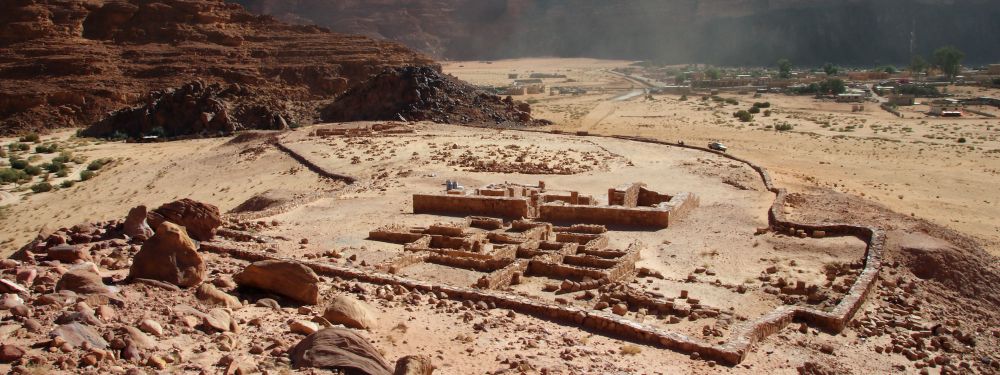

Wadi Rum, also known as the Valley of the Moon, is located in southern Jordan and is distinguished by its unique desert landscape characterized by monolithic rock formations and ancient petroglyphs. Among the notable historic sites in Wadi Rum is the Nabataean Temple, which is a testament to the valley's rich cultural heritage and long-standing human occupation.
The Nabataeans were an Arab people who inhabited northern Arabia and the Southern Levant, and their presence in the region can be traced back to the 4th century BC. Renowned for their ability to adapt and thrive in the harsh desert environment, the Nabataeans developed advanced methods of agriculture, water conservation, and trade. The Nabataean Temple in Wadi Rum is one of the remnants of their architectural genius and spiritual traditions, attributed to their main deity, Dushara.
Tourism in Wadi Rum began to develop in the 20th century when explorers and archaeologists started taking an interest in the Nabataean civilization. The dramatic desert landscape of Wadi Rum and its archaeological significance were brought to wider international attention by British officer T.E. Lawrence, famously known as "Lawrence of Arabia," who was based in Wadi Rum during the Arab Revolt of 1917-1918.
In 2011, Wadi Rum was inscribed as a UNESCO World Heritage Site, which recognized both its natural and cultural significance. This acknowledgment greatly enhanced international awareness of the site and attracted a larger number of tourists from around the globe. Visitors to Wadi Rum are often drawn by the opportunity to see the well-preserved Nabataean Temple, alongside engaging in a variety of outdoor activities such as rock climbing, camel treks, and hot air ballooning.
The latest trends in tourism to Wadi Rum involve sustainable and eco-friendly travel. Tour operators are increasingly offering accommodations like luxury desert camps and eco-lodges that blend in with the natural environment, promising minimal impact on the delicate desert ecosystem. Tourists today are also seeking immersive cultural experiences, such as spending time with local Bedouin communities to learn about traditional ways of life, music, and cuisine.
Adventure tourism is also on the rise, with the area's challenging landscapes providing perfect venues for hiking, rock climbing, and 4x4 expeditions. The unique combination of natural beauty and historical allure continues to make Wadi Rum, including the Nabataean Temple, a compelling destination for travelers from all over the world.
Tourism authorities in Jordan are focusing on promoting Wadi Rum's historical significance and cultural legacy while ensuring that tourism growth is managed sustainably. Preserving the integrity of the Nabataean Temple and the surrounding landscape for future generations remains a priority as Wadi Rum continues to captivate and inspire global visitors with its timeless beauty and historical wonders.